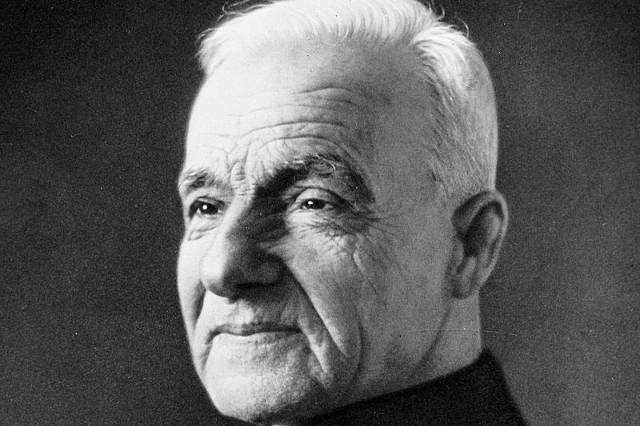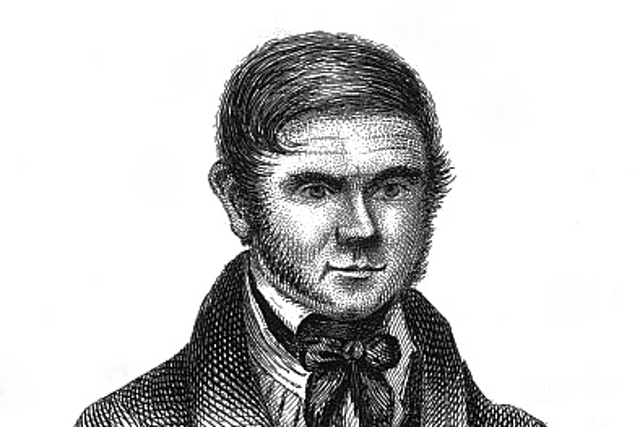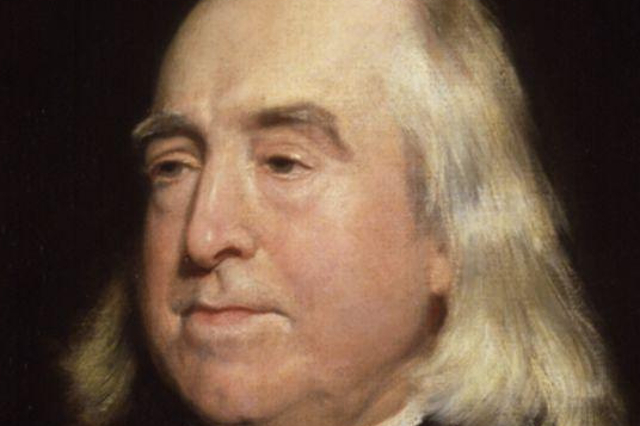Typically, when people die, there are different options for how to properly and respectfully dispose of their remains. Methods vary, but they all typically involve working with the entire body at once.
However, this is not always the case. Sometimes, certain body parts are removed for preservation. Other times, they mysteriously disappear, especially when it comes to a famous or infamous figure. Today, we are going to examine ten such body parts that had interesting stories to tell long after their owners had left this mortal coil.
10. Galileo's middle finger

As far as Italian scientists go, few were more prolific or important than Galileo Galilei, an astronomer who got into trouble with the Catholic Church for his heretical heliocentric hypotheses. If you go to the Museo Galileo in Florence, formerly the Institute and Museum of the History of Science, you can see many of the artifacts he used to make his discoveries. You can also see his middle finger encased in a glass egg.
How did it get there? So in 1737, nearly 100 years after Galileo’s death, some of the scientist’s followers ordered his body exhumed and buried in a mausoleum more befitting a man of his stature. Since they were there anyway, they also cut off three of Galileo’s fingers as a memento, along with his last remaining tooth.
The middle finger was kept by a Florentine antiquarian Anton Francesco Gori , and was later sold to various scientific institutes until it came into the possession of the Museum of the History of Science in 1927. Since then, it has been on display, becoming the only human remains . are displayed in a place dedicated to scientific instruments.
At least that was the case until 2009, when others missing fingers and tooth reappeared after being missing for nearly 300 years. They were sold at auction and then reunited with the middle finger and are now on display together.
9. Washington's Last Tooth

George Washington's dental problems are fairly well documented. He began experiencing toothache and decay in his 20s, and the problems only worsened as he aged, causing him frequent pain and requiring several sets of dentures. Despite the myth, none of them were made of wood. In fact, Washington's first set of dentures were made by Dr. John Baker out of ivory before the Revolutionary War.
Washington then used the services of a French dentist named Jean-Pierre Le Mayer, but ultimately a doctor named John Greenwood became the personal dentist of the Founding Father.
By the time Washington became president, he had only one real tooth left, and Greenwood did his best to preserve it, leaving a hole to accommodate it in all the dentures he made for the president. This was not only because of Greenwood's belief that a dentist should never extract a tooth when it could still be saved, but also for practical purposes, since the real tooth was used to secure the dentures.
However, eventually the inevitable happened and Washington also lost his last tooth, which he gave To John Greenwood as a token of gratitude. Greenwood kept the tooth in a special locket that he always carried with him, and which is now in the collection of the New York Academy of Medicine.
8. Brother Andre's Heart

In the early 20th century, André Bessette, better known as Brother André, became a significant figure in the Catholic Church in Canada, was beatified by Pope John Paul II in 1982, and was finally canonized as saint in 2010.
However, all of this happened decades after his death. Immediately after Brother Andre's death in 1937, his heart was removed and placed in a reliquary that was displayed at the Oratory of St. Joseph in Montreal. Fast forward a few decades to 1973, when the heart was stolen and held for a ransom of $50,000.
No ransom was paid, so for a year the heart was considered lost. Then, one day in 1974, a prominent Montreal lawyer Frank Shoofy An anonymous caller claimed to know the location of Brother Andre's heart. Following his instructions, Shoofy and several police officers went to the basement of an apartment building in the city and found the reliquary hidden in a cabinet, with its seal intact and its heart intact. The identity of the thief remains a mystery, as does what prompted him to...change his mind, pun intended.
7. The Big Toe of the Tollund Man
In 1950, a body was found in a bog in Denmark that became known as Tollund Man. He was about 2,400 years old and was in exceptional condition, especially the head, which still had hair and beard stubble. Unfortunately, getting the body out of the bog intact was a challenge that scientists had not faced until 70 years ago, so they compromised by saving the head and leaving the rest. So if you ever see Tollund Man in the Silkeborg Museum, you should know that while the head is the real thing, the body is a replica.
So what happened to the real body? Well, it was dug out of the swamp as safely as possible, then cut open And were cut into smaller pieces, which were sent around for study. Since the head was clearly the centerpiece of the collection, no one kept track of the other pieces, and they soon began to get lost.
In the 1980s, scientists thought they might try to reassemble the body. After years of effort, they were able to retrieve everything except the internal organs and the right big toe, which had clearly been sawed off.
Fast forward a few decades, and in 2016, the museum received an interesting call from a woman named Birte Christensen, who had the big toe of Tollund Man. She was the daughter of the late Brorson Christensen , a restorer who helped preserve the Tollund Man's head. While working on the bog body, he cut off a toe to study different preservation techniques. No one ever asked for it back, so he simply kept it in a jar of blue liquid on his desk until his death.
6. Einstein's Brain

A similar situation happened to Albert Einstein's brain after his death in 1955. His body was placed in the care of a pathologist. Thomas Harvey , who removed the brain for study. Given that the name "Einstein" has become synonymous with "genius," it's no surprise that people wanted to study his brain. What makes this story controversial is that it remains unclear whether Harvey had permission to do what he did, or whether he simply stole Einstein's brain and then refused to return it.
According to Einstein's biographers, the scientist left instructions cremate his body and scatter his ashes in a secret location. Harvey, of course, knew nothing of this; he simply saw a golden opportunity to advance his career. When Hans Albert, Einstein's son, found out about this, he was furious, but Harvey managed to persuade him to let him keep his brain to study the "secret of genius", with the proviso that soon He will publish his discoveries in scientific journals.
But the years turned into decades and still... nothing. Eventually, everyone forgot about Einstein's brain, but Harvey still kept it in several glass jars that he carried around with him across the country.
Although it was not known at the time, the reason Harvey kept quiet all these years was that he had nothing to say. The various neurologists and neuropathologists who studied the small samples Harvey was willing to part with said the brain was normal, and he did not want that published.
It wasn’t until 1985, three decades after Einstein’s death, that the first papers about his brain appeared, arguing that there were various differences between his brain and the average brain that might indicate the characteristics of a genius. These papers were heavily criticized and debunked, but Harvey’s brain survived. By that point, he had lost his marriage, his job, his career, and his brain was all he had. Only after his death did his heirs finally give away Einstein’s brain, much of which ended up in the National Museum of Health and Medicine.
5. Hamlet's Skulls

IN "Hamlet" there is a famous scene , where the title character picks up the skull of a dead court jester and begins a monologue beginning with the line "Alas, poor Yorick! I knew him, Horatio. ... in the play « real skulls and bones ".
But what about today? London's National Theatre director Peter Hall allegedly wanted to try it in 1975, but he was so shocked during rehearsals that he replaced it with a live-action replica.
In 1982, the pianist Andre Tchaikovsky bequeathed his skull to the Royal Shakespeare Company specifically for his role as Yorick. At his bizarre request, his skull was used in photo shoots and rehearsals, but never on stage. Until 2008, when the Doctor himself, David Tennant, used a real skull during the show for his performance as Hamlet.
The American comedian and acting coach Del Close had the same idea. He died in 1999 and bequeathed his skull to the Goodman Theatre in Chicago for use in the role of Yorick. Although a real skull was used on stage, suspicions soon arose that it was not Del Close's. Although the executor of his estate initially denied the allegations, she eventually confessed, claiming that she could not find anyone to preserve the skull before cremation and that she had purchased a replacement skull from a medical supply company.
4. Burke's Skin

Despite their mass murders taking place nearly 200 years ago, William Burke and William Hare remain among Scotland's most notorious murderers. Originally starting out as body snatchers who sold fresh corpses for dissection, Burke and Hare eventually discovered that it was easier and more profitable to simply create corpses rather than dig them up. They killed 16 people before they were caught, at which point Hare turned in evidence to the King and turned in his partner in exchange for immunity.
William Burke was hanged On January 28, 1829, in front of a huge crowd estimated in the tens of thousands, Burke was also publicly dissected as part of his sentence, and his skeleton was removed, preserved and put on display in the Anatomical Museum of the Edinburgh Medical School.
The strangest thing, however, was the removal from Berka skin , which was later used for a little anthropodermic bibliopegy or, more simply, for binding a book in human skin.
3. Haydn's Heads

The famous Austrian composer Joseph Haydn died in Vienna in 1809. A man like him certainly deserved a lavish funeral, especially since he was under the patronage of the royal house of Esterhazy, but as it happened, Austria was at war with France at the time, so Haydn was buried quickly and without fuss.
About 10 years later, someone reminded Prince Nikolaus Esterházy II that Haydn was still sitting in the same grave, so the wealthy royal had his remains dug up and moved to his family residence. Except when he did, he discovered that Haydn's head was absent .
Here's what happened: Shortly after his funeral, two admirers of the composer bribed a gravedigger to give them Haydn's head to use in phrenology , a debunked charlatanism that involved measuring bumps on a person’s skull to predict various traits. After they were done, they kept the head as a trophy. They also showed it off to anyone who came to visit, so it wasn’t hard for the prince to figure out who stole it. He demanded that they return the skull, which they did… sort of. They returned the “skull,” which was then buried in the mausoleum along with Haydn’s remains.
We don’t know whose skull it was, but it certainly wasn’t Haydn’s, because the wily duo held on to it. Over the centuries, the skull changed hands until it came into the possession of the Esterhazy family in the early 20th century. They held a ceremony and finally reunited the body with the head, 150 years after they were separated. However, since they didn’t know who the other skull belonged to, they didn’t want to just throw it in the trash, so they left it there, and now there are two heads in Haydn’s tomb.
2. The whole body of Jeremy Bentham

Jeremy Bentham was the father of utilitarianism and one of the founders of University College London (UCL), but today he is mostly remembered as the man who asked for his body to be dissected, preserved and put on public display – a “car” . -icon ", as he called it.
Ironically, Bentham got his wish. After his death in 1832, Dr Thomas Southwood Smith removed his skeleton and dressed it in Bentham's clothes, and the auto icon was later displayed in the UCL student centre, becoming the college's unofficial mascot.
The head was another matter. Bentham wanted them to use his own mummified head, but Dr. Smith was no expert on mummification He tried his best, but the end result looked pretty awful, so the college decided to replace it with a wax replica. However, for most of the autoicon's existence, the real head was still on display, lying at the feet of its former owner. It wasn't until the 1990s that the real head was kept in a safe for safety reasons after it was stolen and damaged during a prank.
The culprits were students from King's College, UCL's rival university. In 1989, they stole Bentham's head and, according to legend, played with her in the street playing football. By the time the college returned it, it was clearly in poor condition, so UCL decided to take it off display. The schoolchildren weren't too bothered, though. The following year, they simply stole Bentham's wax head.
1. Napoleon's penis

"What's Napoleon's penis doing in New Jersey?" I hear you ask. Well, it's a strange and confusing story, full of unspecified gaps. It seems that after Napoleon's death in 1821, his doctor Francesco Autommarchi During the autopsy, he cut off the "little general" and gave him to the priest who performed Napoleon's last rites, Abbot of Anges Paul Vignali.
The Tendon remained in the Vignali family for some time, but we are not certain of its exact movements until the early 20th century, when it ended up in the collection of the American rare book dealer A.S.W. Rosenbach . In 1927, the organ was exhibited for the first and only time at the Museum of French Art in New York. After that, its journey again becomes a bit hazy until it was bought at auction in 1977 for $3,000 by urologist Dr. John Lattimer He kept it in his New Jersey home for decades, allowing only a handful of people to see it.
The penis is now in the hands of Lattimer's heirs, who are also keeping it under close scrutiny. And if you're wondering what it looks like, it's described as "very small," "withered," and "resembling a piece of leather or a shriveled eel."













Оставить Комментарий